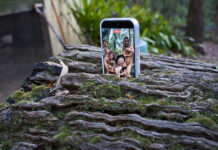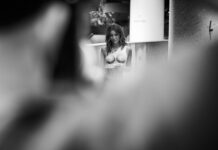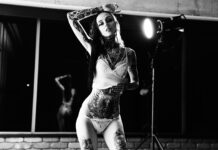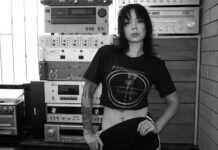Sony Pro Support
Early last year I had a problem with my Sony 85mm GM and I had to send it to an authorised Sony repairer in Adelaide (I will not mention the company name). My experience with them was terrible. They said they could repair it (cost was just under A$ 1600) so my insurance said if it is repairable, that’s what we’re gonna do (this lens brand new now retails for A$ 2200 and it’s a better version than the one I have).
ONE full month later, I received my lens back, and it was still not working. So I sent it back. And it took them another two months to send it back to me. The lens is fine, but it hasn’t been the same ever since.
I’m talking about my MAIN lens. When it happened, probably 95% of my work was done with it. Not having this lens for THREE months gave me so many headaches. I had to use 3 lens combined to be able to do what I do with that one alone (and one of them was a Canon lens adapted, so not exactly ideal).
After going through this bad experience, I decided to sign up for the Sony Pro Support. This is a way of having priority if something like this happens. Instead of relying on repairers that don’t really care and have VERY BAD customer service, you go through Sony. Authorised repairers will not want to make Sony upset.
This experience had NOTHING to do with Sony, except the fact Sony has them as an authorised repairer.
Sony reaching out

Sony last year reached out to Sony Pro Support customers offering a loan to try the new Sony A9 II. They also asked us to list 3 lenses we would like to test and they would try to make it happen in the order we requested. I wanted to try the Sony 135mm f/1.8 GM but I got the Sony 70-200mm f/2.8 GM instead, which is not a bad thing anyway.
So yes, here I am with my hands on the Sony A9 II, battery grip and Sony 70-200mm f/2.8 GM.
What you’ll read here is my experience with camera and lens (mainly the camera really), how they feel, how they compare with my A7 III and A7R III, and anything else I can find to talk about!
And I will start with the things I DIDN’T LIKE.
The Sony menu system
It’s no secret the Sony menu system is a bit of a problem and it’s the main point of complaints within Sony shooters. I love my A7 series cameras, but they menu can be tricky. Thankfully with all the Mark III cameras they gave us the ability to create a personal menu with the stuff we use the most.
But when you get your hands on a new camera, you have to go through the whole setup to make it feel the way you like. A week before I received the A9 II, I bought a new A7 III and had to go through the whole menu (trying to copy the settings I had on my A7R III) and now I have this A9 II to setup.
Having my other cameras with me for that helped a lot, of course. It wasn’t until I was ready to test the camera (I shoot tethered in the studio most of the time) that I had to put the camera away to try to figure it out later: I couldn’t find how to turn the USB connection into the “PC Remote” mode the A7’s have so you can tether it to Capture One Pro!
As it turns out, this setting is completely different and it’s under the Network menu, not the USB Connection settings. It probably has to do with the fact that the A9 II also has the ethernet port and they maybe wanted to keep these settings under a “network” area (I haven’t checked where this setting is in the A7R IV, which is a more similar camera to the A9 II than the Mark III cameras are). Anyway, I didn’t test the camera as soon as I wanted because I wasn’t going to troubleshoot things right before a shoot.
To be fair, the A9 II has some illustrations in the menu to show what you’re playing with (it shows where the button you’re about to customise is, for example.

If you would like to compare the specs of the four cameras (A9 II, A7R IV, A7R III and A7 III) I mention here side-by-side, please click here as I’ll not be getting into numbers too much.
SD Card slots
The A7’s Mark III have two SD card slots. First is UHS-II compatible, for fast cards, but the other one is only UHS-I. I still don’t understand why camera manufacturers do this, the Canon 5D III was the same with the slots: CompactFlash was the fast one, SD was very slow.
With a flagship sports camera like the A9 II, thankfully both card slots are UHS-II. And they corrected a problem with the A7’s Mark III: the card slots order. On the A7 III and A7R III (not the A7R IV), slot 1 is the bottom and slot 2 is the top and on the A9 II and A7R IV it’s the other way around, which makes a lot more sense.
Also all the cover doors (for card slots and connectivity ports on the other side) feel a lot better and stronger.
Headshots

So instead of using the camera the day it got delivered, I spent some time setting it up the way I use my A7’s and used it on a full day of actor headshots at Agency 888.
I should probably have shot with my 85mm to have a fair comparison between the A7R III and the A9 II but since I had the 70-200mm with me, I decided to use it the whole day.
The camera is amazing. Little things that make such a big different. It’s bigger and it feels better in my big hands, the buttons feel so good that it makes the buttons on the A7 III and A7R III feel like you’re using a toy. There are two extra dials: one for drive mode and timer and one for AF (AF-S, AF-C, etc) and you get used to them very quickly, better than pressing a button, changing the setting to what you want and then pressing another button to say “ok”.
Although I used Eye-AF, I like to keep my focus mode/area as a large flexible square and I move it around so it’s always where my subject’s face should be. I just find this way the camera finds the eye quicker as it’s already focusing on the area the eye will be. That little square on the A7’s is grey and it can be hard to see sometimes. On the A9 II (and A7R IV), it’s RED (you can change the colour to white as well). So you can see it pretty easy. And when it locks focus, it turns green like the A7’s. But here’s the cool thing: when the camera isn’t sure if it focused properly, the square turns PURPLE! Such simple thing that Sony could just add to the A7’s via software update. Also, when you reach the edge of the frame with the focus square thing, if you keep going it will appear on the other side. Very simple thing and very handy!
The LCD and Viewfinder are the same as the A7R III, so they are better than the A7 III ones (but the viewfinder on the A7R IV is better). The A9 II and the A7 III have the same amount of focus points (693) versus 399 focus points on the A7R III, and those extra focus points make Eye-AF better on them.
Other than that, for a controlled environment like this, not much difference. Eye-AF feels as good as the A7 III, so it’s a bit better than the A7R III.







Helga

Now this is where this camera really shines: fast moving subjects! So what better subject to try “sports” photography than Helga???
My wife and I took Helga to the creek (literally 30 seconds walk from our place) where she runs and swims and jumps non stop.
It was 1pm and even though it was a full sun bright day I was still able to shoot when the LCD when I wanted to go very low to the ground. The LCD is very bright.
Continuous shooting with the A9 II is only 10 FPS if you’re using the mechanical shutter, but change it to the electronic shutter and you go up to 20 FPS with NO BLACKOUT! That paired with a buffer of up to 239 RAW files… it is insane! Also, back in the day I used to disable all beeps and sounds in all my cameras but I eventually changed that so I can hear when the camera locks focus. It’s just a way to use another sense other than my vision so I can use my eyes to care about other things, not focus. Having sounds enabled will give you a fake shutter sound when using electronic shutter, which is cool. You can of course disable that and have your camera shoot 20 FPS with no blackout and being completely silent!
We were there for just under two hours and I came back with over 1700 photos!!!
I know most sports shooters will probably not care that much about 20fps as they understand the sport they’re shooting and they can predict when things will happen. But if you don’t know well the sport you’re shooting, or you’re shooting an erratic crazy dog, it’s quite handy.
Focusing is very accurate and this camera has more options for tracking subjects. The “Animal” Eye-AF actually works! I haven’t really tried that properly with the A7 III and A7R III other than just enabled it and point it to Helga and go like “yep, it finds her eyes”, but this time with the A9 II I tried for real and it would find Helga’s eyes from far away (not tooooo far away) with her moving a lot!
Also for this test I was using Aperture Priority, which is a rare thing for me to do, and it was then that I realised another cool little difference on this camera: the exposure compensation dial has a lock button. I never cared about this with the other ones as I only shoot manual, but I do notice that I bump into that dial occasionally and if that dial did something at all for my photography, it could be a problem. Not with the A9 II!!!











Jess May

Testing the camera with Helga was fun, but it’s not what I use cameras for. The first test at the agency is, but not shooting Helga’s adventures.
So I asked my friend Jess May to come and help. Jess May is a very talented and beautiful model, dancer, makeup artist… you name it, she can do anything!
The idea for this test was to get her doing crazy dancer stuff outdoors, shoot something in the studio with strobes, and some low light using LED lights as well.
Jumping
It’s VERY hot right now in Brisbane so we finished the outdoors tests and left the studio ones for the day after.
For the dance jumping shots we did both full shade and full sun. In full sun I was shooting with ISO 100 and in shade ISO 200. My shutter speed was 1/640s for both and aperture ranged from f/2.8 to f/3.2 for shade, f/4 in full sun. And I kept the lens between 70mm and 80mm. I also shot with mechanical shutter and electronic shutter. Both work perfectly so the only real different is the FPS and the no blackout (and sound or lack thereof).
Focus was spot on EVERY-SINGLE-TIME. We took a bit over 700 photos during this test, not a single one is off.
So hey, if you like shooting dancers or athletes, you’re going to love this camera!





Just Jess
We also had some fun without doing anything too crazy (apart from me crouching in the middle of the street):






Studio

For the studio test I wanted to try different lenses and different light setups.
LED Ring Light
I started with a Yongnuo LED Ring Light with the studio very dark, just to see how the AF would go in a dark environment. For this test I used the Sigma 135mm ART because in my experience it is one of the most accurate focusing lens I ever used.
I have to say the A9 II was a bit disappointing on this test. It didn’t do a terrible job but also didn’t do any better than my A7R III.


Octa Camera Left With Different Lenses
With more ambient light in the studio to help the camera focus I moved on to using strobes. First lens I tried was the Sigma 135mm ART, then the Sony 70-200mm GM and the Sony 85mm GM. The A9 II did pretty well with all of them.









Focus Peaking
Not that it matters much but I decided to just have a go at focus peaking using a vintage 135mm lens my friend Will gave me a while a go. Same as the A7R III really.

So in a controlled environment like my studio, the camera is pretty much the same as my A7R III. I still like having the Red focus area square though.
After all the tests, we shot something else just for fun.





Colours are pretty much the same as my A7 III and A7R III.
Other shoots
I managed to get some other studio shoots using the A9 II so here are just a few shots taken with it.
Mina







Emma
Emma’s Instagram, makeup by Jessica May HMUA





Backlit

When shooting with Emma I wanted to try the AF system on the A9 II in a backlit situation, where any camera struggles. I gotta say the A9 II did pretty damn well when compared to the A7 III, A7R III, or myself manually focusing.
I had another full day shooting headshots for Agency888, and it performed as well as before.
Conclusion

After first photo taken. 
After last photo taken.
After only clicking 5712 times, what can I say other than this is the best camera I ever shot with? Having said that, most of the things I like the most about it, are also on the new A7R IV (I went to Warehouse Studios to check Gary’s A7R IV just to see if these little things where there).
It’s a very robust camera when compared to the ones I have, but so is the A7R IV. The only real differences between the A9 II and the A7R IV are resolution (way more on the A7R IV), the 20fps and the couple of extra dials on the A9 II.
Is it a camera for everyone? It could be, but the price tag makes it a very difficult to justify camera, unless you really need what it offers and the others don’t. I would say for most people, the A7 III is the best camera you can buy without going all in. If you like resolution, I would skip the A7R III and go straight to the A7R IV (if you can afford it of course) because it doesn’t just offer more resolution (61mpixels vs 42mpixels) and it feels like a more professional camera, not forgetting all the nice things I like about the A9 II that are also present on the A7R IV. If you don’t need or don’t want the resolution, and you don’t really care about being able to shoot 20fps, the A7 III is the camera to get.
It’s worth mentioning I just got the A7 III BECAUSE I don’t need the resolution of my A7R III for most of my work.
The A7 III is such a great camera, it’s really hard to find it in the second hand market. That in itself says a lot.
But yes, the A9 II and the A7R IV are the best cameras Sony makes, just continuing their tradition of listening to their customers and improving the cameras with every new generation, ever since they created the A7 series.
If you have any specific questions about my trial, get in touch. I might be able to answer things that I left out!






